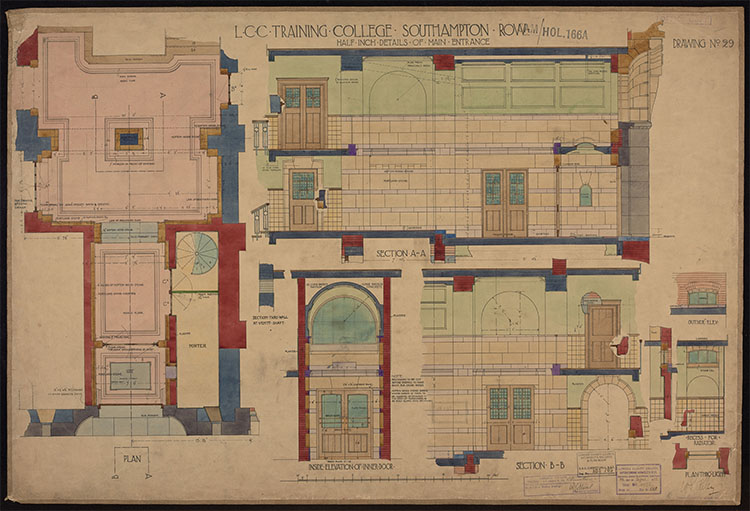The Archives and Special Collections Centre has run an ‘Institutional Memory Project’. This was set up to survey, collect and capture UAL’s institutional memory – that is, the stories, facts, experiences, knowledge and concepts that have informed the history of the institution throughout its formation and development. Here, our Institutional Memory Project Archivist, Robin Sampson, writes about the process of digitising a collection of university estates plans.
This is the first time that there has been a concerted effort to bring together and continue collecting an ‘Institutional Archive’. UAL is made up of six world-leading Colleges; Camberwell College of Arts, Central Saint Martins, Chelsea College of Arts, London College of Communication, London College of Fashion and Wimbledon College of Arts. Each individual College archive holds material relating to the University, or its previous incarnation, The London Institute, but it had not previously been collected in a systematic way.
Much of these collections comprise records created as part of the daily business of the University. These range from the minutes of committee meetings; policies and reports; student work and academic research; exhibition ephemera; photographs of college life; and magazines, handbooks and prospectuses published by the colleges.
One of the key strands of the project came about after the discovery of a large number of plans in the University’s Estates department. These plans, dating from the 1900s to the present day, depict the changing nature of the University’s property portfolio, with a number depicting buildings and holdings no longer owned by UAL. We decided that these plans were too important to be hidden away in dusty crates, so we arranged for their transfer to the UAL Archive. This would aid in their preservation, but we also really wanted to make as many of them as accessible as possible, and this is where TownsWeb Archiving came in.
The big problem with these plans is their lack of accessibility. They are large and cumbersome, and decades of being rolled has made it difficult for them to be laid flat. Therefore it was very hard to assess and appraise them. Fortunately I was able to call on a conservation student based at Camberwell College of Arts who assisted me with the appraisal and also gave me advice on best conservation practice.
I selected 100 of what I considered to be the most historically interesting (as well as aesthetically pleasing!). We then contacted TownsWeb to arrange for them to be digitised. We have had a fruitful and ongoing relationship with TownsWeb in the past and we knew that they would provide the best quality digitisation service possible. Once the digitisation process has been completed, our goal is to make these plans available for the public to view via a section of the University’s website.
For anyone working on a similar memory project, I would recommend getting as wide as a survey of the current archive collections as possible, and do lots of networking. Speaking with the various collection managers enable me to be put in touch with lots of departmental administrators who were able to show me a huge amount of untouched and potentially very historically interesting material. This has been a difficult but very rewarding project that has enable me to shine a light on many of the University’s long-hidden collections, and with the estate plans TownsWeb have been instrumental in allowing us to make this possible.
You can see more images of this and Townsweb’s other projects here.
Image Credit: Townsweb Archiving

